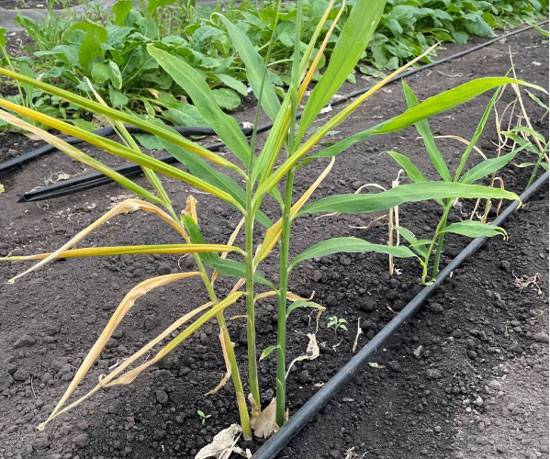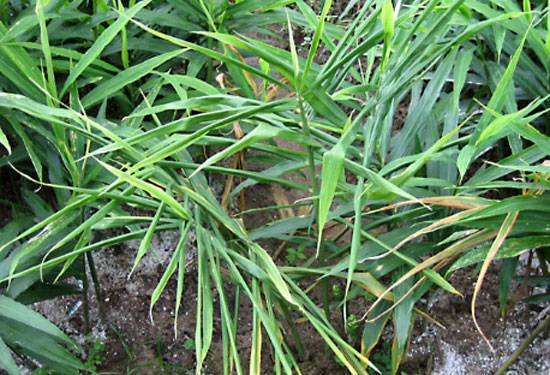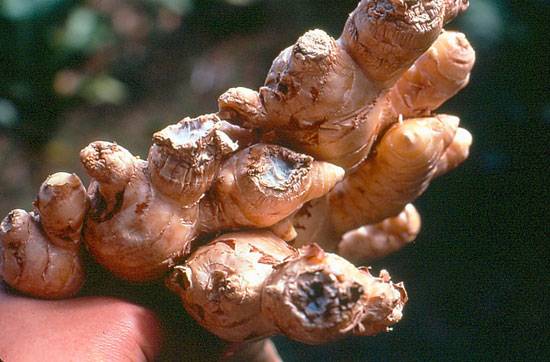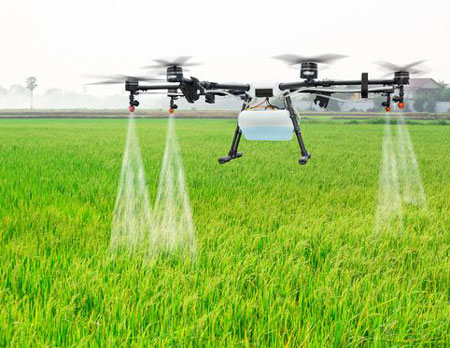Ginger
Leaf Spot
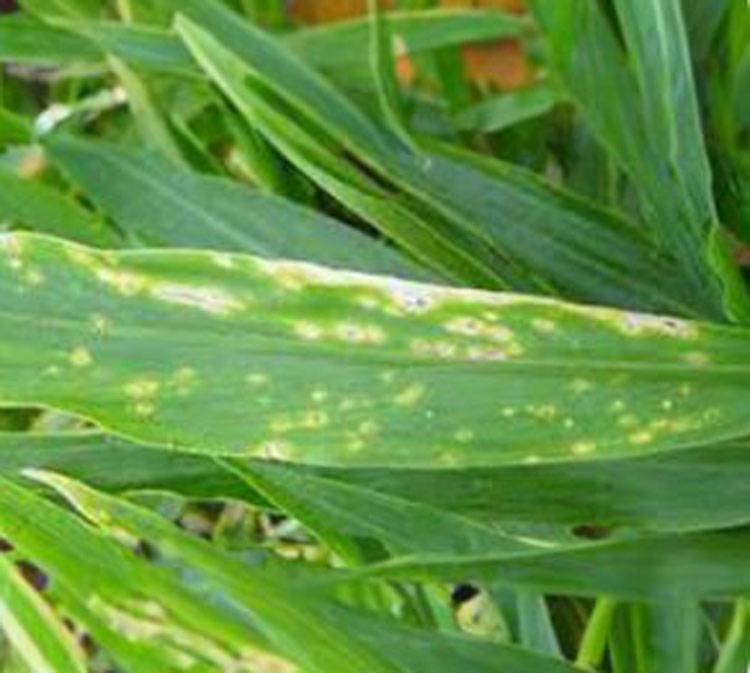
Phyllosticta zingiberi
Fungal Disease
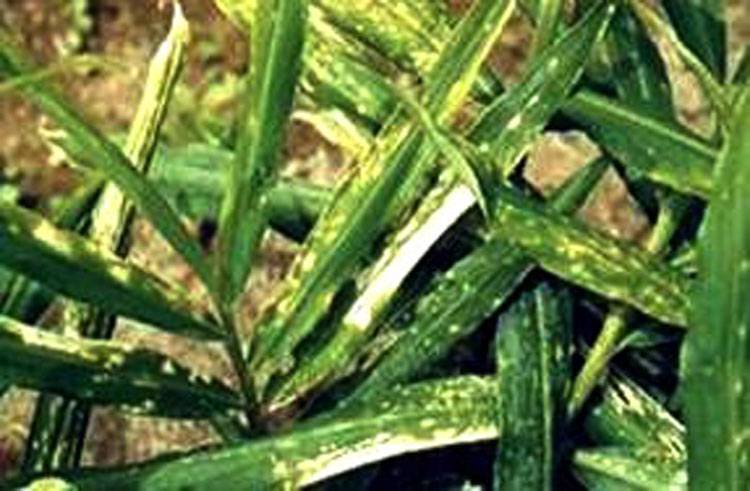
Phyllosticta zingiberi
Fungal Disease
Introduction
Leaf spot disease of ginger, caused by Phyllosticta zingiberi, is a serious fungal disease affecting ginger crops, leading to significant yield losses. The disease is prevalent during wet weather conditions, particularly from July to October.
Symptoms
- The disease starts as water-soaked spots on leaves.
- Spots develop into white lesions with dark brown margins and a yellow halo.
- The lesions enlarge, and adjacent spots merge to form necrotic areas.
- In severe cases, the infection leads to leaf blight, causing leaves to dry up.
- Reduction in photosynthetic area results in 13% to 66% yield loss due to a decrease in rhizome size and number.
Disease Spread and Favorable Conditions
- The pathogen spreads through rain splashes during intermittent showers.
- The disease is more severe in exposed conditions where ginger is grown without shade.
- Heavy rainfall and temperatures between 22-28°C during July-August favor disease development.
- Increased relative humidity and leaf wetness are crucial for the rapid spread of the disease.
- Studies indicate that 85.48% of disease severity is influenced by air temperature, humidity, and cumulative rainfall.
Management Strategies
-
Cultural Practices:
- Ensure proper spacing and good air circulation to reduce humidity around plants.
- Avoid planting in low-lying areas where waterlogging occurs.
- Remove and destroy infected leaves to prevent the spread.
-
Chemical Control:
- Spraying Mancozeb (0.25%) or Copper oxychloride (0.3%) at the first appearance of symptoms can help control the disease.
- A second spray may be required after 10-15 days if weather conditions remain favorable.
-
Biological Control:
- Application of Trichoderma-based biocontrol agents can help in reducing disease incidence.
- Use of neem-based formulations may also provide some protection.
Conclusion
Leaf spot disease is a major threat to ginger cultivation, particularly in high-humidity regions. Timely identification, proper field management, and appropriate chemical or biological treatments can help minimize yield losses and ensure a healthy crop.

